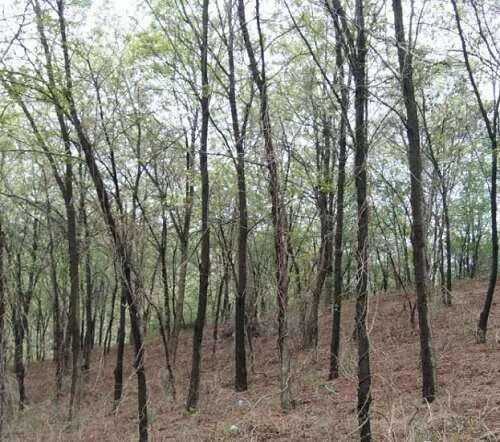Understanding water-use patterns of tree species in transition from dry to rainy seasons

The Chinese Loess Plateau (CLP) is typical of water-limited ecosystems throughout the world. Robinia pseudoacacia (R. pseudoacacia) has become a predominant species cultivated in the CLP following the implementation of the Grain for Green Program. However, the water-use pattern of R. pseudoacacia in CLP remains unclear.
Recently, a study led by Prof. Wang Yunqiang from the Institute of Earth Environment (IEE) of the Chinese Academy of Sciences investigated water-use characteristics of R.pseudoacacia during the transition period between the dry and rainy seasons (from April to July) through stable isotope technique (δ18O and δD). Their study was published in Forest Ecology and Management.
They found that the soil water content and the stable isotope signatures in shallow (0-40 cm), intermediate-shallow (40-120 cm), intermediate (120-200 cm) and deep (200-500 cm) showed significant variations over the four-month study period.
R.pseudoacacia exhibited different water uptake patterns during the four months. In the dry season (April), the trend in water uptake shifted to the deep soil layer with a proportion of 48.4%, potentially a key period for the onset of soil desiccation in this soil layer.
As precipitation increased, the proportion of water uptake from the shallow and intermediate-shallow soil layers increased (with a proportion of 51.6% in June and 53.6% in July, respectively). This was closely correlated to precipitation, plant root distribution and external environment.
"The stable isotope technique and two complementary approaches, i.e., the direct inference method and the MixSIAR model, were used to assess R. pseudoacacia water-use strategy characteristics in the 0-500 cm soil profiles from the dry to the rainy season and to distinguish water source changes during this transition period," said Prof. WANG.
The researchers found that R. pseudoacacia exhibited diverse water source patterns during the transition period.
More information: Yali Zhao et al. Transference of Robinia pseudoacacia water-use patterns from deep to shallow soil layers during the transition period between the dry and rainy seasons in a water-limited region, Forest Ecology and Management (2019). DOI: 10.1016/j.foreco.2019.117727
Journal information: Forest Ecology and Management
Provided by Chinese Academy of Sciences





















